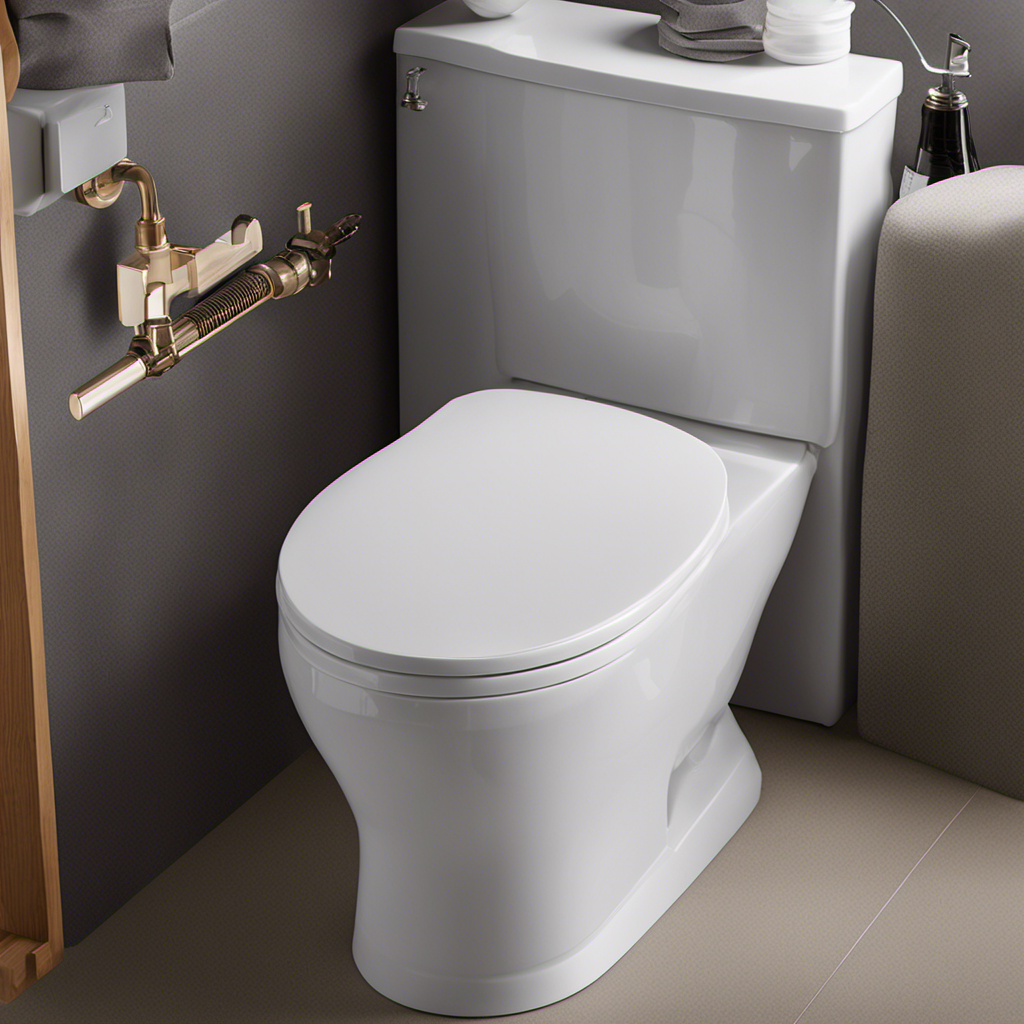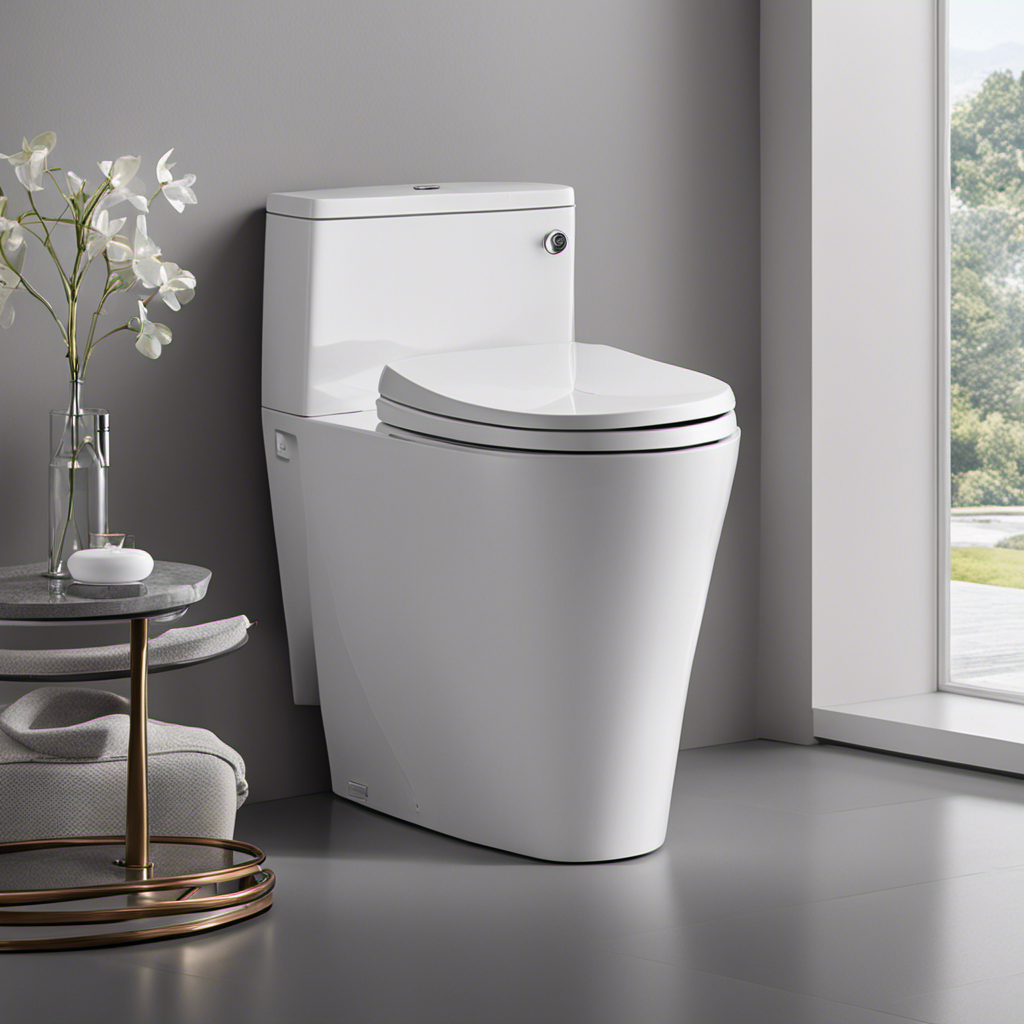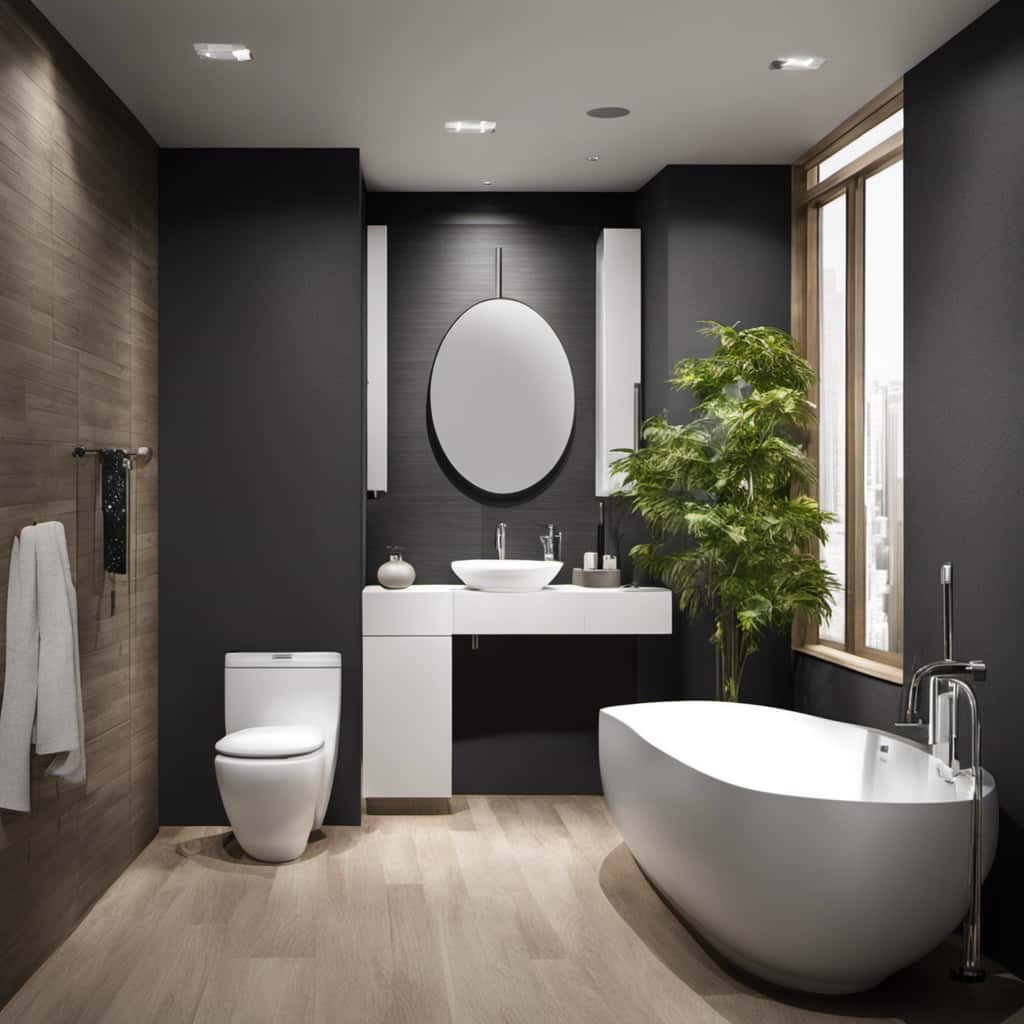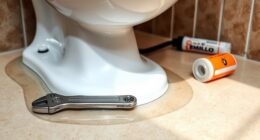Hey there, folks! Today, I’m gonna show you how to replace your toilet fill valve and flapper.
Now, I know what you’re thinking, ‘Why would I want to mess with my toilet?’ Well, let me tell you, a faulty fill valve or flapper can cause all sorts of problems, like constant running water or even a leaky toilet.
But don’t worry, with a few simple steps, I’ll have your toilet working like a dream again in no time.
So, let’s get started, shall we?
Key Takeaways
- The toilet fill valve controls the water flow into the toilet tank and is an essential component of the flushing system.
- Troubleshooting common fill valve problems includes checking the water level, inspecting for leaks, cleaning the valve, and replacing a worn or damaged flapper.
- When replacing the old fill valve, it is important to shut off the water supply, disconnect the water line, and match the specifications and measurements of the old valve for the replacement.
- The toilet flapper creates a seal to prevent water flow into the bowl and requires regular maintenance to ensure proper functionality.
Understanding the Toilet Fill Valve
To understand how the toilet fill valve works, you need to know that it controls the water flow into the toilet tank. The fill valve is an essential component of a toilet’s flushing system. It regulates the water level in the tank and ensures that it refills after each flush.
If you’re experiencing issues with your toilet fill valve, troubleshooting may be necessary. Common problems include a constantly running toilet, a weak flush, or a tank that doesn’t fill properly. Before attempting any repairs, it’s important to turn off the water supply to the toilet.
When installing a new fill valve, make sure to follow these tips:
1) Choose a high-quality replacement valve.
2) Read the manufacturer’s instructions carefully.
3) Use the proper tools and follow all safety precautions.
4) Adjust the water level to the recommended height.
Identifying and Removing the Old Fill Valve
When it comes to replacing an old fill valve in a toilet, there are a few key points to consider.
First, you’ll need to know how to properly remove the old fill valve to make way for the new one. This involves shutting off the water supply, disconnecting the water line, and unscrewing the old fill valve from the bottom of the toilet tank.
Once the old fill valve is removed, it’s important to identify the correct replacement by matching the specifications and measurements of the old valve.
Lastly, you’ll need a few essential tools for the removal process, such as an adjustable wrench, pliers, and a bucket or towel to catch any water that may spill during the process.
Old Fill Valve Removal
First, you’ll need to shut off the water supply to the toilet before removing the old fill valve. This is an important step to prevent any water leakage while working on the valve. Once the water supply is turned off, you can begin the process of removing the old fill valve.
Here’s a step-by-step guide to help you with the removal:
- Start by removing the lid of the toilet tank and set it aside.
- Locate the water supply line connected to the fill valve and use a wrench to loosen the nut connecting it to the valve.
- Once the nut is loosened, you can remove the water supply line from the fill valve.
- Next, locate the lock nut that holds the fill valve in place. Use an adjustable wrench to loosen and remove the lock nut.
- With the lock nut removed, you can now lift the old fill valve out of the toilet tank.
By following these steps, you will successfully remove the old fill valve and be ready for the installation of the new one.
Troubleshooting fill valve problems becomes easier when you have a clear understanding of the removal process.
Identifying Correct Replacement
Once you have removed the old fill valve, it’s important to identify the correct replacement to ensure proper functioning of your toilet. Finding compatible parts can be a bit overwhelming, but with a few tips, you can successfully tackle this DIY replacement project.
First, check the brand and model of your toilet. This information is usually stamped inside the tank or can be found in the owner’s manual. Armed with this knowledge, you can head to your local hardware store or search online for the specific fill valve that matches your toilet.
Additionally, take note of the size and shape of the old fill valve. Measure the height from the bottom of the tank to the top of the overflow tube. This measurement will help you determine the correct size for the replacement fill valve.
Lastly, consider opting for a universal fill valve that can fit most toilets. These are designed to be adjustable and can save you time and effort in the long run.
Tools Needed for Removal
To remove the old fill valve, you’ll need a pair of pliers and an adjustable wrench.
First, turn off the water supply to the toilet by closing the shut-off valve.
Flush the toilet to drain the tank, then use the pliers to disconnect the water supply line from the bottom of the fill valve.
Next, use the adjustable wrench to loosen the nut holding the fill valve in place.
Once the nut is loose, you can lift the old fill valve out of the tank.
Remember to take note of the type of fill valve you have, as there are different types available such as ballcock, diaphragm, and float cup.
Troubleshooting fill valve problems is easier when you know what type of valve you’re working with.
Installing the New Fill Valve
Start by disconnecting the water supply line from the old fill valve. This will prevent any water from flowing into the toilet while you work. Once the water supply is disconnected, you can proceed with installing the new fill valve. Here are the steps to follow:
- Remove the old fill valve by unscrewing it from the toilet tank.
- Place the new fill valve in the same position and secure it with the provided screws.
- Attach the water supply line to the new fill valve, making sure it is tightly connected.
- Adjust the water level by following the instructions provided with the new fill valve. This will ensure proper flushing and prevent any overflow issues.
Here is a table summarizing the steps:
| Steps | Instructions |
|---|---|
| 1 | Disconnect water supply line |
| 2 | Remove old fill valve |
| 3 | Install new fill valve |
| 4 | Attach water supply line |
| 5 | Adjust water level |
Troubleshooting Common Fill Valve Issues
If your toilet is constantly running, there are a few things you can check to fix the issue. First, make sure to check the water level in the tank and adjust the float if needed. This is a common problem that can be easily fixed by adjusting or replacing the float. However, there are other common fill valve issues that may require troubleshooting. Here are some tips to help you with fill valve maintenance and troubleshooting flapper problems:
-
Check for leaks: Inspect the fill valve and flapper for any signs of leaks, such as water dripping or pooling around the base of the toilet.
-
Clean the fill valve: Over time, debris and sediment can accumulate in the fill valve, causing it to malfunction. You can clean the valve by using a mixture of vinegar and water to remove any buildup.
-
Replace the flapper: If the flapper is worn or damaged, it may not create a proper seal, leading to a constantly running toilet. To solve this problem, replace the flapper with a new one.
-
Adjust the water level: If the water level in the tank is too high or too low, it can cause issues with the fill valve. Adjust the water level to the recommended height specified by the manufacturer.
Exploring the Function of the Toilet Flapper
The function of the toilet flapper is to create a seal that prevents water from flowing into the bowl when the tank is not being flushed. It is a crucial component of the toilet’s flushing mechanism.
To ensure proper functionality, regular toilet flapper maintenance is necessary. One common issue that can arise with the flapper is a leak, causing the tank to constantly refill. Troubleshooting flapper problems involves inspecting the flapper for any signs of wear or damage, such as cracks or deterioration.
Additionally, adjusting the chain length and ensuring it is properly connected to the flush handle can help resolve flapper issues. Regularly cleaning the flapper and its surrounding area can also prevent clogs and maintain optimal performance.
Replacing the Flapper for Improved Toilet Performance
To improve your toilet’s performance, you’ll want to check the condition of the flapper and consider replacing it if necessary. The flapper plays a crucial role in the flushing process, ensuring that water is released from the tank into the bowl when you flush. If the flapper is worn or damaged, it can lead to issues such as weak flushes or constant running water.
Here are some common flapper problems you may encounter and how to troubleshoot them:
-
Flapper not sealing properly: This can cause water to leak from the tank into the bowl. Adjust the chain length or replace the flapper if it’s worn.
-
Flapper chain tangled or too tight: This can prevent the flapper from fully closing. Untangle or adjust the chain for proper operation.
-
Flapper closing too quickly: This can cause a weak flush. Adjust the chain length to slow down the closing speed.
-
Flapper not opening fully: This can result in a weak flush or incomplete emptying of the bowl. Adjust the chain length or replace the flapper if necessary.
Conclusion
In conclusion, replacing the toilet fill valve and flapper is a simple yet crucial task for maintaining a properly functioning toilet.
By understanding the function of the fill valve and flapper, identifying and removing the old fill valve, and installing a new one, you can ensure improved toilet performance.
Don’t let common fill valve issues hold you back from a fully functioning toilet. Take charge, tackle the task, and triumph in toilet repair!










